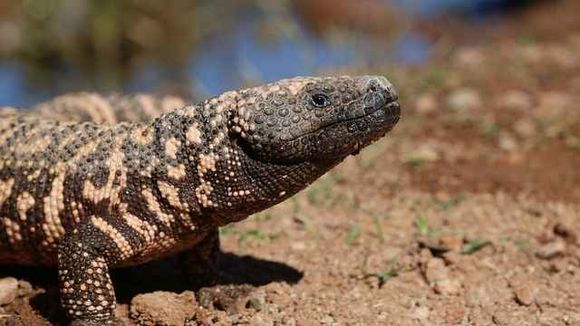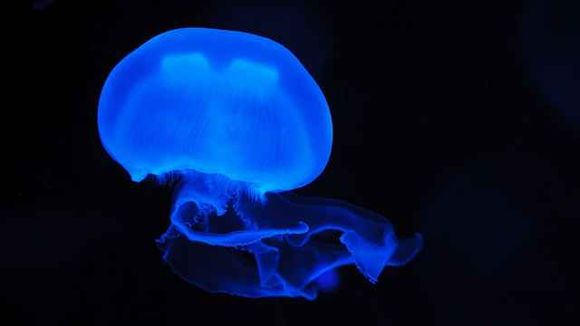Medicinal products from very toxic animals
You would never voluntarily ingest snake venom or smear your skin with insect venom, would you? Well, before you disavow anything like this, you should know that there is actually a long history of transforming some of the most toxic substances on Earth into useful and even sometimes life-saving drugs.
Scientists are increasingly looking at the deadliest corners of the animal world for drugs, as the poisons of some animals are full of molecules that evolved to perform very specific activities in small quantities. In other words, they are ideal pharmaceuticals.
Botulinum toxin
Botulinum toxin is a neurotoxic protein that is produced by the bacterium Clostridium botulinum and other similar species, causing mild injection site paralysis. Also known as Botox, it won't bring you back from the brink of death. In fact, one gram would be enough to kill a million people, but by paralyzing the muscles of the face in very small doses, you can deprive yourself of several wrinkles. However, with this result comes some serious risks for cosmetic use, including dysphagia, muscle weakness and allergic reactions. 1
Botox was originally used as a treatment for ophthalmic conditions such as strabismus (crossed eyes) and twitching eyelids. Today, it is also used to prevent migraines and is just one of many terrible substances that are successfully used.
Captopril
The oldest toxic-inspired pharmaceutical product, and indeed the one that started looking for others, is captopril. It appeared in pharmacies in 1981 and almost instantly became popular because it treated hypertension or high blood pressure, which is a prerequisite to develop heart or kidney disease and get a heart attack, stroke or aneurysm, and all thanks to the poison of a South American viper.
One of the great effects of this snake venom is the alarmingly rapid drop in blood pressure. This drop is useful for snakes, because the brain and muscles from which their food (other animals) have to escape do not work so well without blood. Because snakes hunt mammals, scientists believe that if they could understand how the poison works, they could better understand how our bodies regulate blood pressure.
It turns out that the blood pressure regulation system is quite complex, but one major way our bodies raise blood pressure is by activating a protein called angiotensin. One of the important things angiotensin does in its active form is to make the muscle cells lining the blood vessels constrict. This means higher pressure.
Scientists discovered that snake venom contains a molecule that blocks the enzyme that makes angiotensin active angiotensin the converting enzyme, or ACE. With few chemical changes, they create captopril, the first ACE inhibitor, and although captopril itself is no longer widely prescribed, ACE inhibitors are still administered every day.
Ziconotide
Here in focus is the amazing and deadly marble cone snail. These slow-moving snails can eat fast-moving fish because their venom quickly paralyzes prey and is very strong. However, the advantage is that their sting does not hurt, and this is because some of the hundreds of conotoxins, the small protein toxins that cone snails produce, target the nerves that signal pain.
Almost 40 years ago, a student who had just graduated from high school discovered that one of these toxins reduced pain about 1,000% more strongly than morphine without causing addiction. This is because it kills pain more directly and specifically than morphine and other opioids. Opioids reduce pain by binding to opioid receptors, which triggers a cascade that, among other things, reduces the activity of calcium channels that nerve cells in the spinal cord need to communicate with the brain.
The toxin from the cone snails simply blocks these channels directly, and this means that there are not so many adverse effects. Your body can't develop a tolerance to it like it can to opioids, and it works in cases where opioids don't. However, this is not a perfect medicine, as it has side effects, such as difficulty walking or psychiatric symptoms, and should be given in specific places and with specific doses.
Ziconotide is in turn a newer, intrathecal analgesic drug used to treat chronic pain. His indication, according to the FDA, is for the treatment of chronic severe pain in patients with intolerance or refractoriness to systemic analgesics or intrathecal morphine. 2
Exenatide

There is a frighteningly impressive creature that you can read that they call it "the monster Gila". The poison of this poisonous lizard can lower blood sugar in people with type 2 diabetes.
The so-called Gila monsters are lizards that live in the deserts of North America. Their poison is not so dangerous for humans, but it is extremely painful the bite itself, and one of the ingredients looks a lot like a hormone that our bodies naturally produce after we eat food. This hormone, called glucagon-like peptide 1, triggers the release of insulin, and because insulin is a hormone that tells cells to take in more sugar from the blood, it lowers blood sugar.
We can't just give humans more of human protein to lower their blood sugar because it breaks down too quickly by enzymes, but the protein in the poison of Gila lizards has a superpower: it's extremely stable. Its action lasts more than 70 times longer in the blood than in the human species, which means that it is much easier to use.
It's not clear why monsters have this super stable sugar-lowering hormone. Scientists only discovered it because they systematically study the poison to see what the different components do, but a synthetic version of the Gila hormone has been on the market for more than a decade. In addition to helping control blood sugar, it also supports insulin it produces healthy beta cells in the pancreas and makes people feel fuller. 3
Linaclotide and Plecanatide
These drugs work by binding to and activating receptors on the cells that line your gut, telling them to release water and salt. This, in turn, softens the stool, facilitating bowel movements. Scientists aren't entirely sure how, but animal studies suggest that these drugs also trigger pain-relieving nerve pathways in the colon.
Cantharidin
The next toxin named cantharidin comes from a type of beetle. If you lubricate one of these beetles, the cantharidin in the blood and other tissues of the beetle will burn your skin, creating blisters. If you swallow too many of these beetles, you will have a lot of problems. According to some estimates, just seven drops of the substance are enough to kill you. In small, controlled doses, cantharidin can remove warts and treat a condition known as molluscum contagiosum.
Biologists believe that male beetles produce this thing as a defensive weapon, as it protects them from being eaten by predators and they can also splash it out at threat. A fun fact is that they also pass on some of it to females during mating with a so-called wedding gift to protect the next generation.
However, instead of leaving these beetles alone, people have been trying to use their toxins for centuries to treat a host of health conditions, as well as a strong aphrodisiac. 4
Stichodactyla toxin

Stichodactyla helianthus is a tropical anemony known as the "solar anemone" and part of the order Actiniaria. The Caribbean solar anemone is armed with poison-filled stinging cells that can stun prey and repel predators. It is likely that its paralytic poison could revolutionize the treatment of autoimmune diseases.
Back in the 1990s, a scientist discovered that one of the paralysis-inducing peptides in anemone venom was special. Called stichodactyl toxin, it does its job by blocking a certain type of potassium channel one that in us happens to be involved in activating a specific set of immune cells.
These cells are the older T cells that have already encountered potential pathogens, but remain in the tissues as a form of immunological memory. They also end up the cells behind many autoimmune diseases, such as lupus and multiple sclerosis, because they sometimes target parts of the body instead of foreign substances. So finding something that selectively damages these cells could lead to relatively effective and targeted therapies for autoimmune conditions, but it has proven to be a real challenge at this stage.









